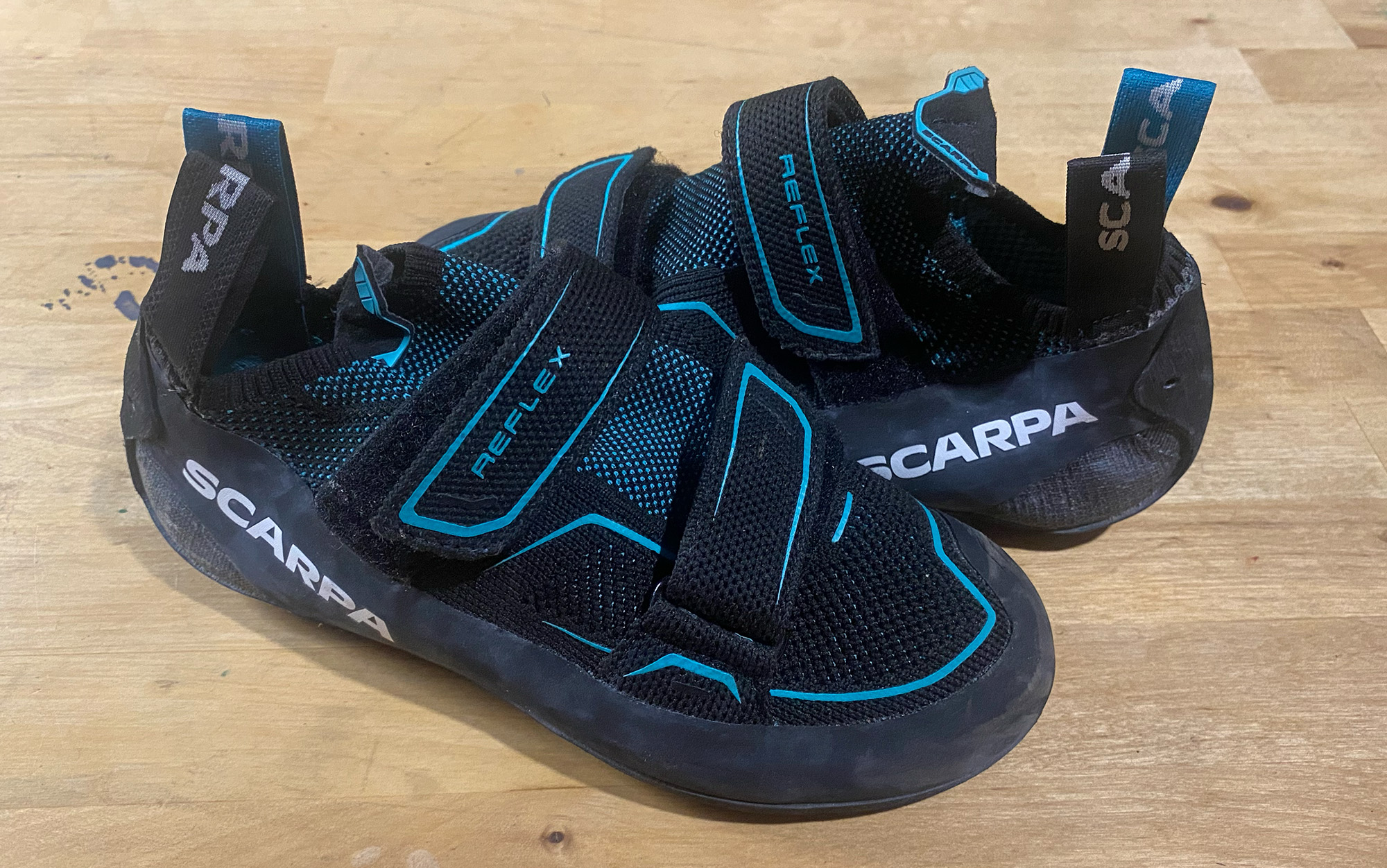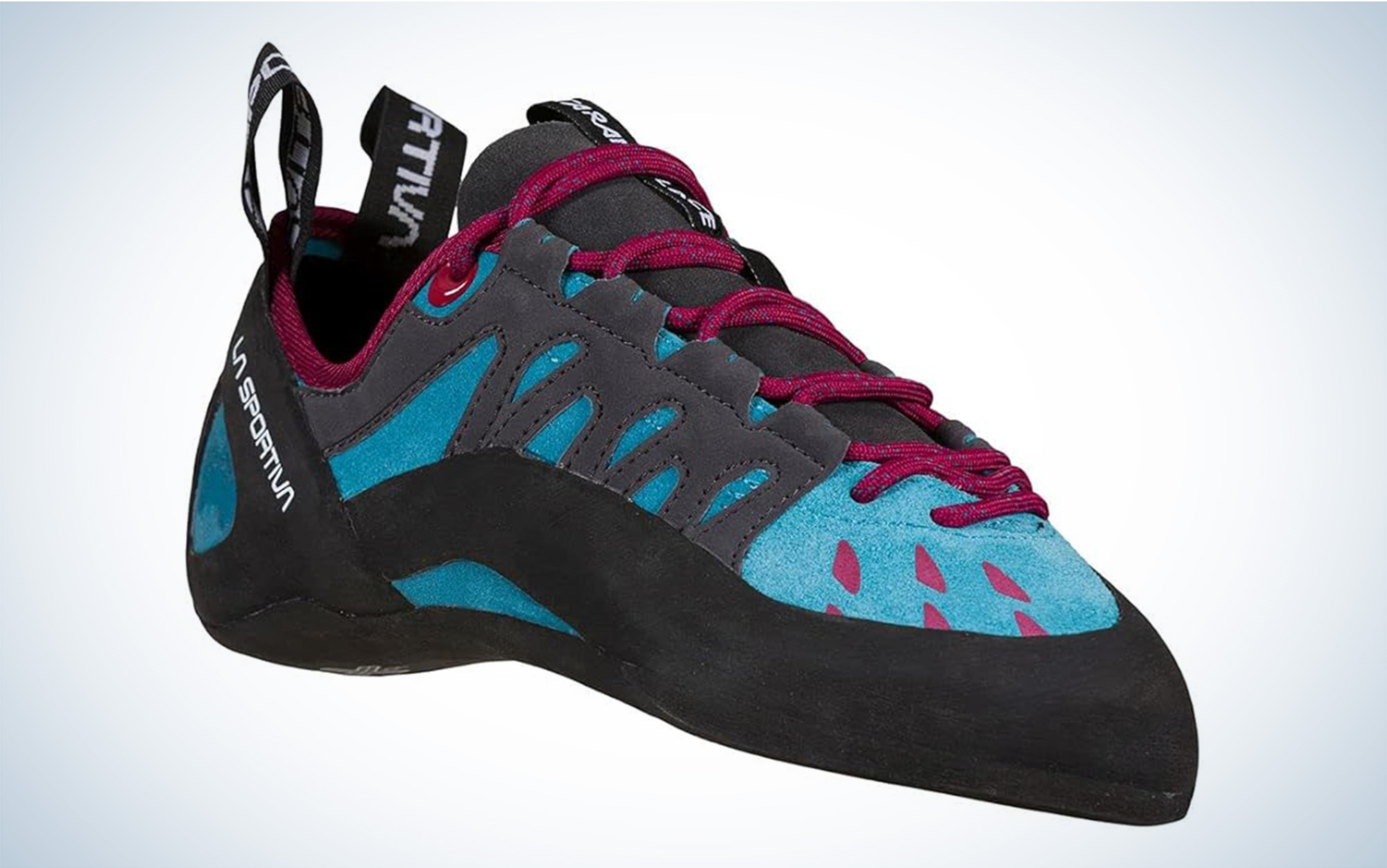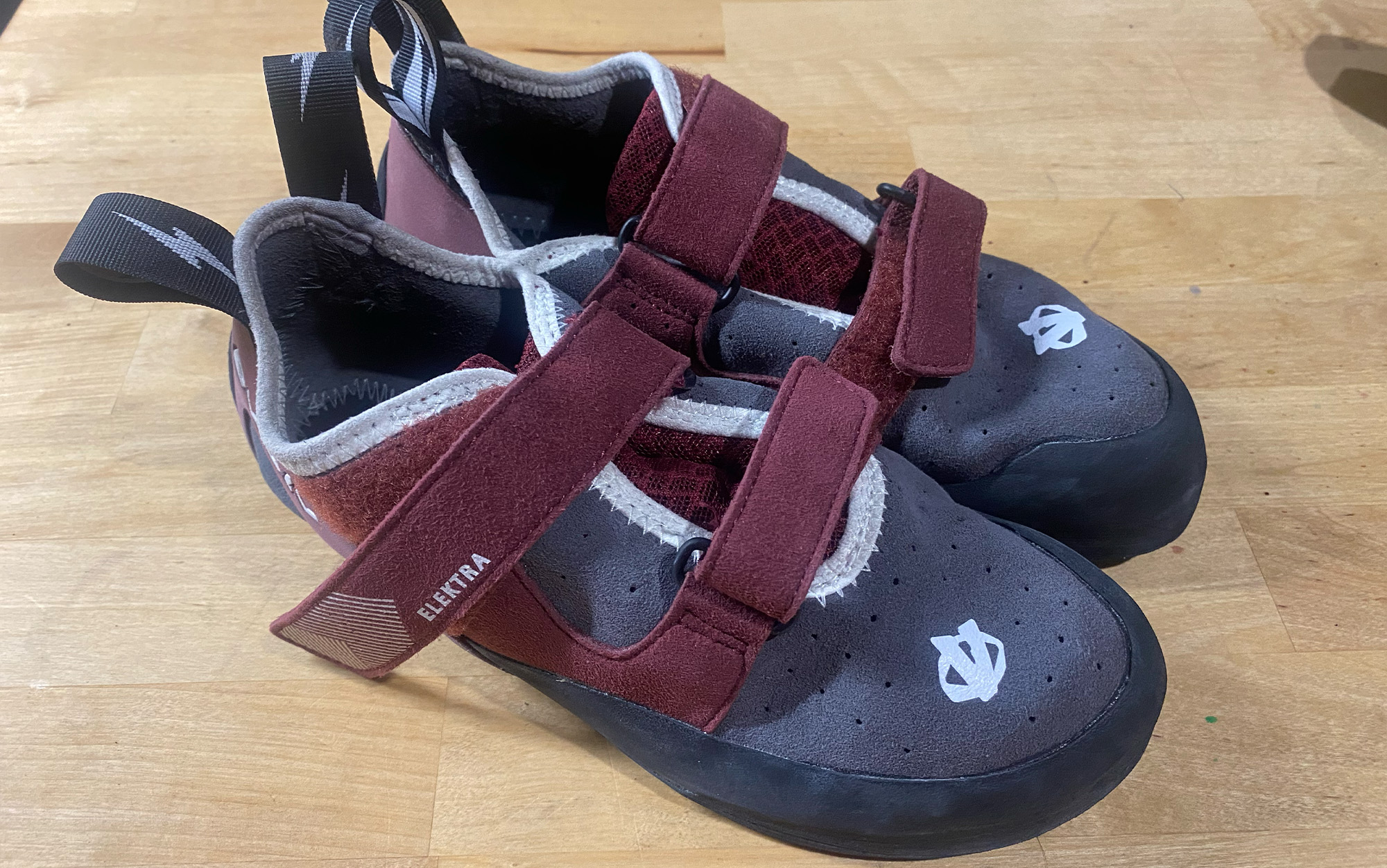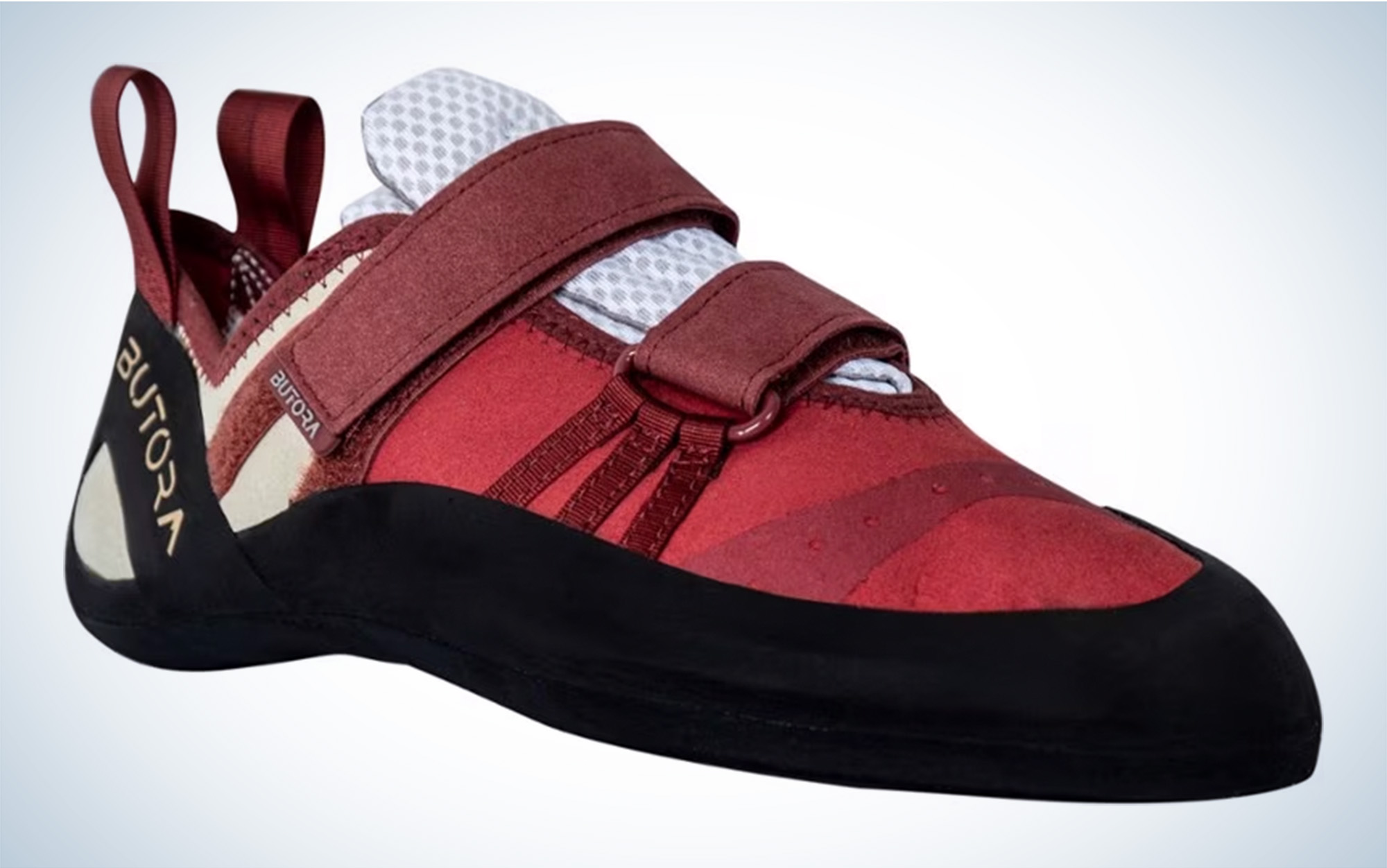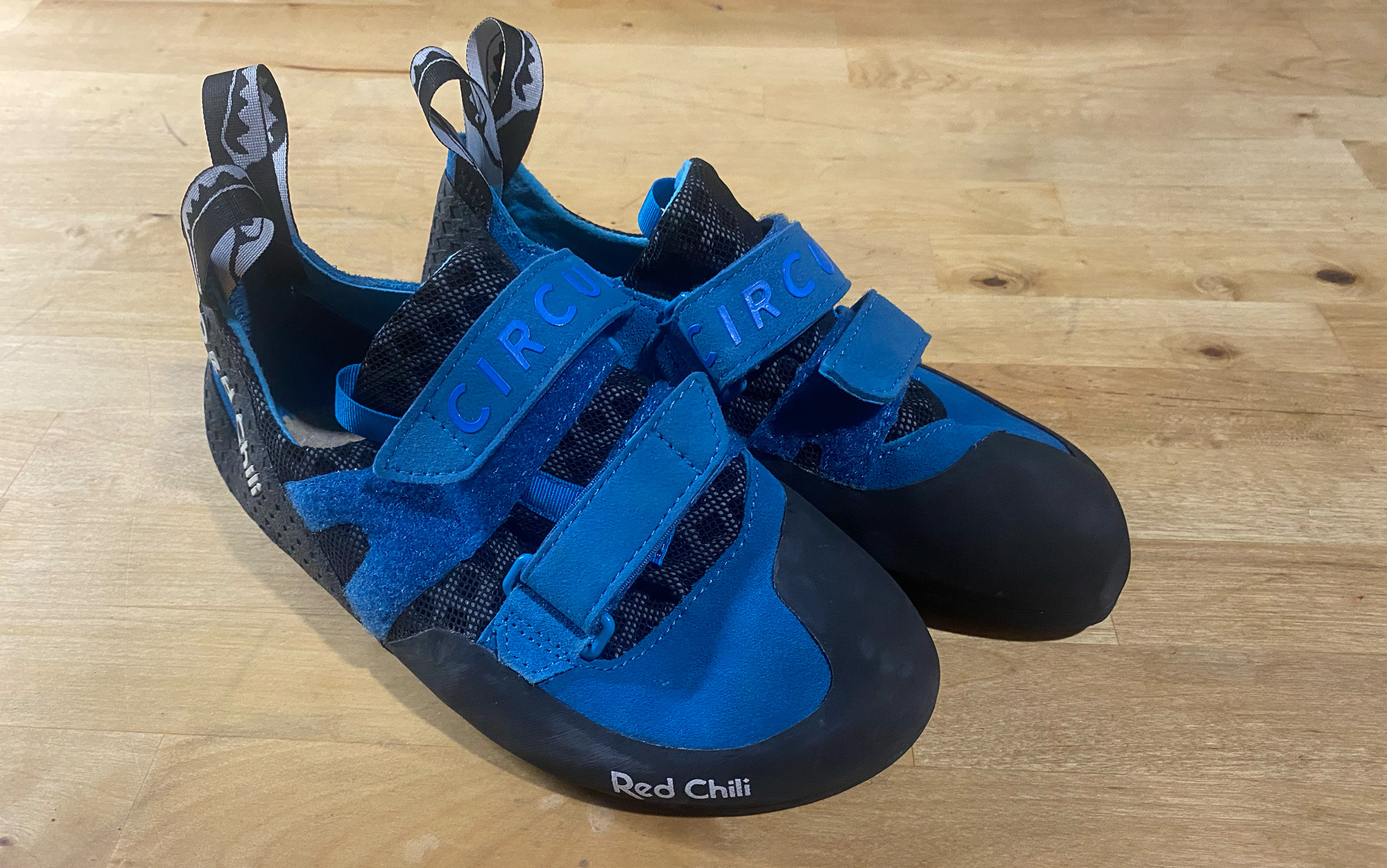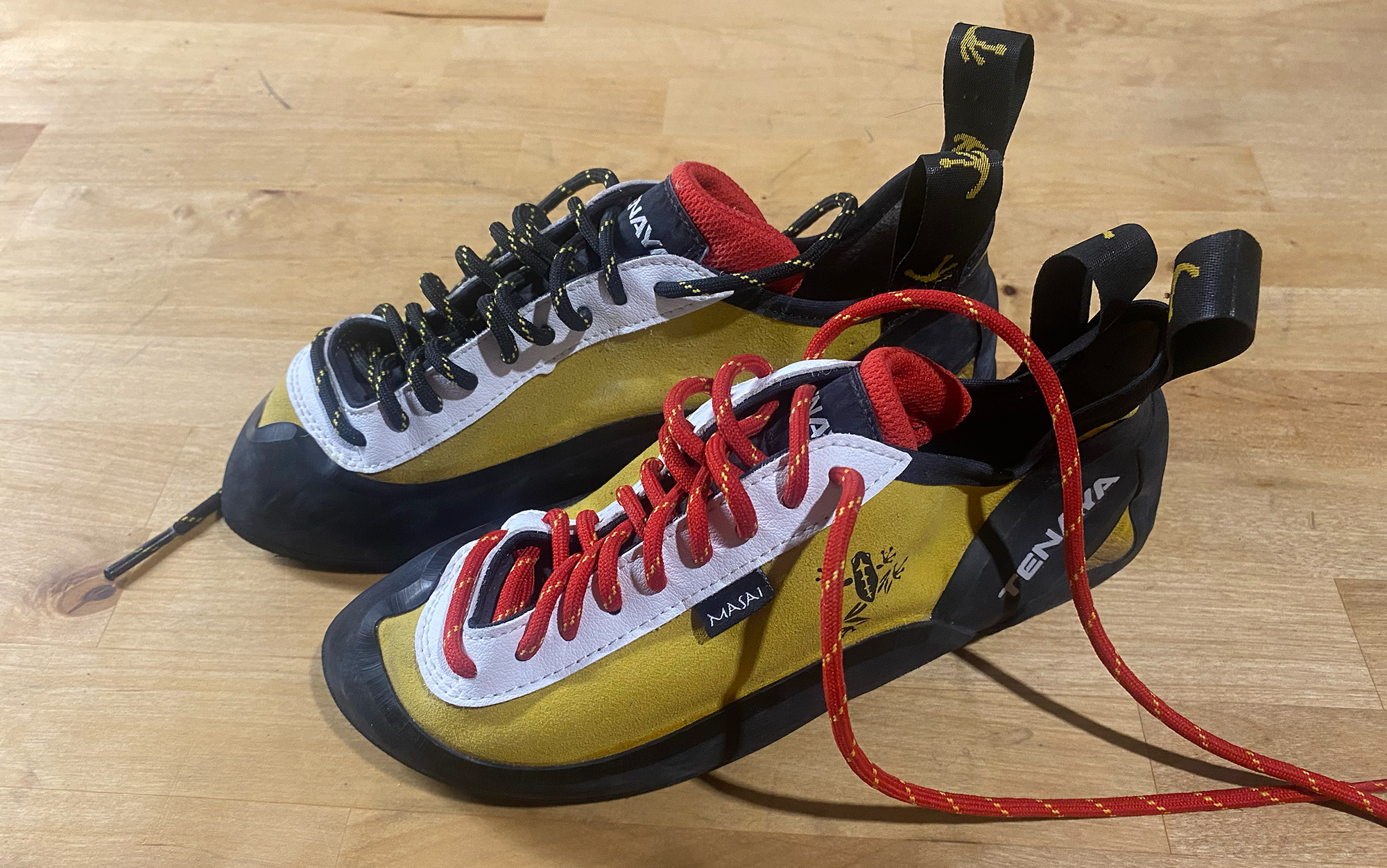We may earn revenue from the products available on this page and participate in affiliate programs. Learn More ›
Climbing shoes are one of the first — and most important — purchases you’ll make as a new rock climber. Choosing the right shoes, however, can be tricky. From shoe materials and rubber compounds to foot shape and fit, there are a number of factors to consider. But it’s worth doing your homework: finding shoes that fit your foot and suit your preferred climbing style can make a significant difference in both your performance and your enjoyment of the sport. To help you make an informed decision, we put together this buyer’s guide. Below, you’ll find comprehensive reviews of the best beginner climbing shoes on the market.
How We Tested the Best Beginner Climbing Shoes
Over the last ten years, rock climbing has exploded in popularity, a trend that’s left the market flooded with beginner climbing shoes. Dozens of models now span a wide range of quality, comfort, and fit. To bring you the best, we tested 20 pairs of shoes from some of the top brands in the business with the help of a dozen testers, who met weekly to take turns with different models and compare notes. The testers ranged from Yosemite big-wall climbers and internationally ranked competitors to novice gym climbers. After two months of testing, we compiled all our testers’ notes, pored over specs and design features, and consolidated our findings into the reviews you’ll find below.
Best Beginner Climbing Shoes: Reviews & Recommendations
Best Overall: Ocun Striker QC
Key Features
- Weight: 1 pound, 2 ounces
- Upper Material: Suede leather
- Rubber: NEO Fuse
- Shape: Flat, slightly asymmetrical
Pros
- Extremely comfortable right out of the box
- Soft sole ideal for smears and slopers
- Leather molds to the foot over time and resists odor
Cons
- Too soft for precise edging
- Less grippy than some other models
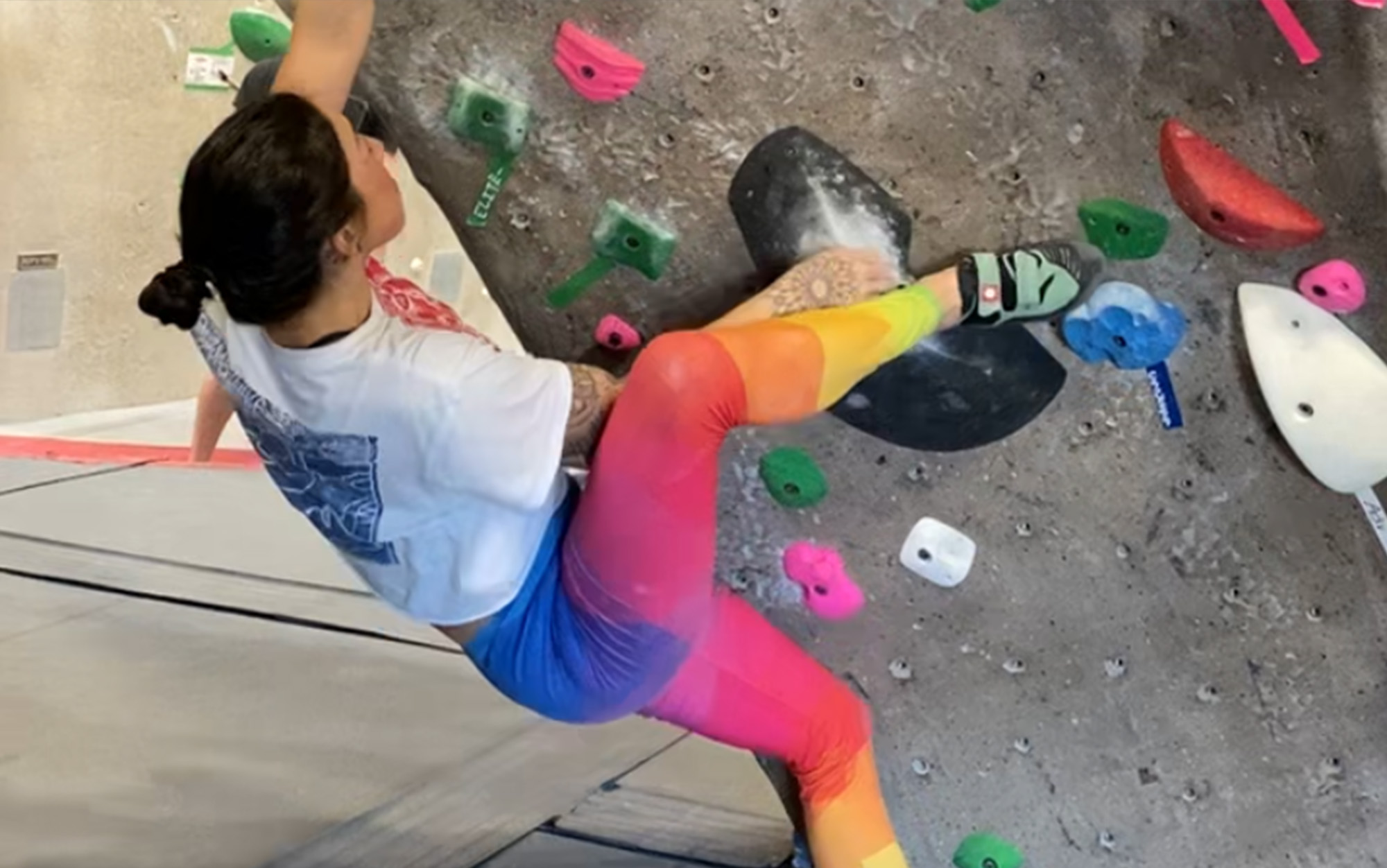
No matter which tester we put in the Ocun Striker QC, the response was the same: “Holy cow, these things are comfy.” Credit a flexible sole and slightly asymmetrical shape, which closely follows the natural curve of the foot. The soft upper stretches to fit a medium to wide toe box, and a low-volume heel provides a secure fit for heel hooking. Overall, testers had few complaints: We found this to be a great all-around shoe for a range of terrain types.
Most Durable: Scarpa Reflex V
Key Features
- Weight: 14 ounces (per pair)
- Upper Material: Synthetic stretch knit fabric
- Rubber: Vision
- Shape: Flat, slightly asymmetrical
Pros
- Soft, sock-like upper
- Dual straps for fine-tuned adjustability
- Flat sole ideal for all-day comfort
- Sturdy construction and durable materials
Cons
- Lacks the sensitivity required for smaller footholds
- Feels stiff out of the box and takes time to break in
Stiff, sturdy, and well-made, the Reflex V is designed to survive your learning years. Scarpa’s proprietary Vision rubber felt sticky and reliable on edges and slopers alike, and testers found that the sock-like upper was both cozy and easy to slide on and off between laps. The only downside: While the sturdy construction promises years of durable wear, it did feel a bit clunky on smaller holds. Climbers looking for greater precision while bouldering or outdoor climbing may want to select a more sensitive shoe.
Read Next: Best Trail Running Shoes
Most Affordable: La Sportiva Tarantulace
Key Features
- Weight: 17.2 ounces
- Upper Material: Leather
- Rubber: FriXion RS
- Shape: Flat, slightly asymmetrical
Pros
- Moderate midsole support balances comfort with edging power
- Leather upper molds to the foot and resists odor
- Extremely affordable
- Durable construction
Cons
- Poor sensitivity on smaller holds
- Laces more cumbersome to adjust than Velcro straps
Over the last few years, the La Sportiva Tarantulace has become ubiquitous in climbing gyms — and for good reason. At under $90, it’s more affordable than any other shoe we tested, and its flat, slightly asymmetrical shape provides outstanding comfort on steep and slabby terrain alike. Testers appreciated the moderate support and stiff midsole, which helped prevent foot fatigue during long gym sessions. However, the sturdy design does make these shoes a bit bulky (and heavy). We found them insufficiently sensitive for small edges and preferred them for roped climbing over bouldering.
Best for Narrow Feet: Evolv Elektra
Key Features
- Weight: 14 ounces
- Upper Material: Synthetic
- Rubber: Trax SAS
- Shape: Flat, slightly asymmetrical
Pros
- Comfortable right out of the box
- Slight asymmetry improves comfort
- Soft sole ideal for smearing and bouldering
Cons
- Softness of the sole can lead to foot fatigue over the course of long sessions
- Not great for edging or overhanging terrain
Designed specifically for low-volume feet, the Evolv Elektra is perfect for climbers who struggle to find a snug, secure fit elsewhere. Testers found that the narrow heel cup provided a secure fit, even during aggressive overhead heel hooks. The sole is soft and flexible, and generous padding lines the tongue. That made the Elektra exceedingly comfortable right out of the box — no break-in time required. The only downside to that soft feel is that the shoe performed much better on smears and slopers than it did on tiny edges; climbers looking to venture into advanced terrain may prefer a stiffer shoe.
Best for Wide Feet: Butora Endeavor 2.0
Key Features
- Weight: 1 pound, 6 ounces
- Upper Material: Leather, microsuede
- Rubber: NEO Fuse
- Shape: Flat, slightly asymmetrical
Pros
- Soft and comfortable, especially for high-volume feet
- Versatile across a range of terrain types
- Forked velcro allows for more precise fit adjustment
- Tensioned heel and reinforced midsole provide extra support
Cons
- Not quite rigid enough to excel on ultra-tiny holds
- Slightly higher price point than some other beginner models
Butora is unique in that it offers each of its climbing shoes in a wide version — but the wide-friendly sizing wasn’t the only reason we loved the Endeavor. A soft, flexible upper provided a glove-like fit on a range of foot shapes, and moderate flex in the sole made it perfect for both smearing and tiptoeing up steep terrain. We also appreciated the slight tension in the heel, which gave testers increased security during heel hooks. Thanks to its secure fit and precision, one tester called the Endeavor the “ballet slipper of climbing.” She also appreciated the slight stiffness in the midsole and the ever-so-slight downturn in the toe, both of which provide support and enhance precision on smaller holds.
Read Next: Best Climbing Chalk
Best for Indoor Climbing: Red Chili Circuit
Key Features
- Weight: 1 pound, 4 ounces (per pair)
- Upper Material: Suede leather, mesh
- Rubber: RX-1 Allround
- Shape: Slightly downturned, neutral symmetry
Pros
- Padded tongue and ankle support
- Downturned shape ideal for smaller edges and steeper terrain
- Dual strap closure is easy to slip on and off
- Soft, breathable upper
- Hemp footbed helps prevent odors
Cons
- Proprietary rubber not as sticky as other compounds
- Narrow-footed testers found the fit slightly baggy
With a slightly downturned shape and more aggressive shape than other beginner shoes, the Red Chili Circuit is ideal for indoor climbers looking to push their limits and start ascending through the grades. A cushy, mesh-wrapped foam wraps the ankle and top of the foot, providing great out-of-the-box comfort and decent breathability — something our sweatier testers appreciated on warm afternoons in the climbing gym. The slightly downturned shape provided great purchase and sensitivity on smaller holds, making this our top choice for bouldering.
Best for Outdoor Climbing: Tenaya Masai
Key Features
- Weight: 1 pound, 8 ounces (per pair)
- Upper Material: Synthetic
- Rubber: Vibram XS Grip
- Shape: Flat, neutral symmetry
Pros
- Laces allow for a more fine-tuned fit
- Stiff sole ideal for edging
- Flat, neutral shape ensures all-day comfort
- Supportive midsole
Cons
- Lace-up closure more cumbersome than velcro
- May not be suitable for wider feet
Durable construction and a supportive, neutral shape makes the Tenaya Masai a perfect fit for long days on moderate terrain. Our testers trusted it for committing fifth-class scrambles and techy multi-pitch routes alike. The narrow, low-volume construction provided a snug fit and serious precision on small edges, and a stiff, supportive midsole prevents arch fatigue on long routes. The only downside is the fit: narrower-footed testers loved the low-volume shape, but those with wider paddles felt squeezed.
How to Choose Beginner Climbing Shoes
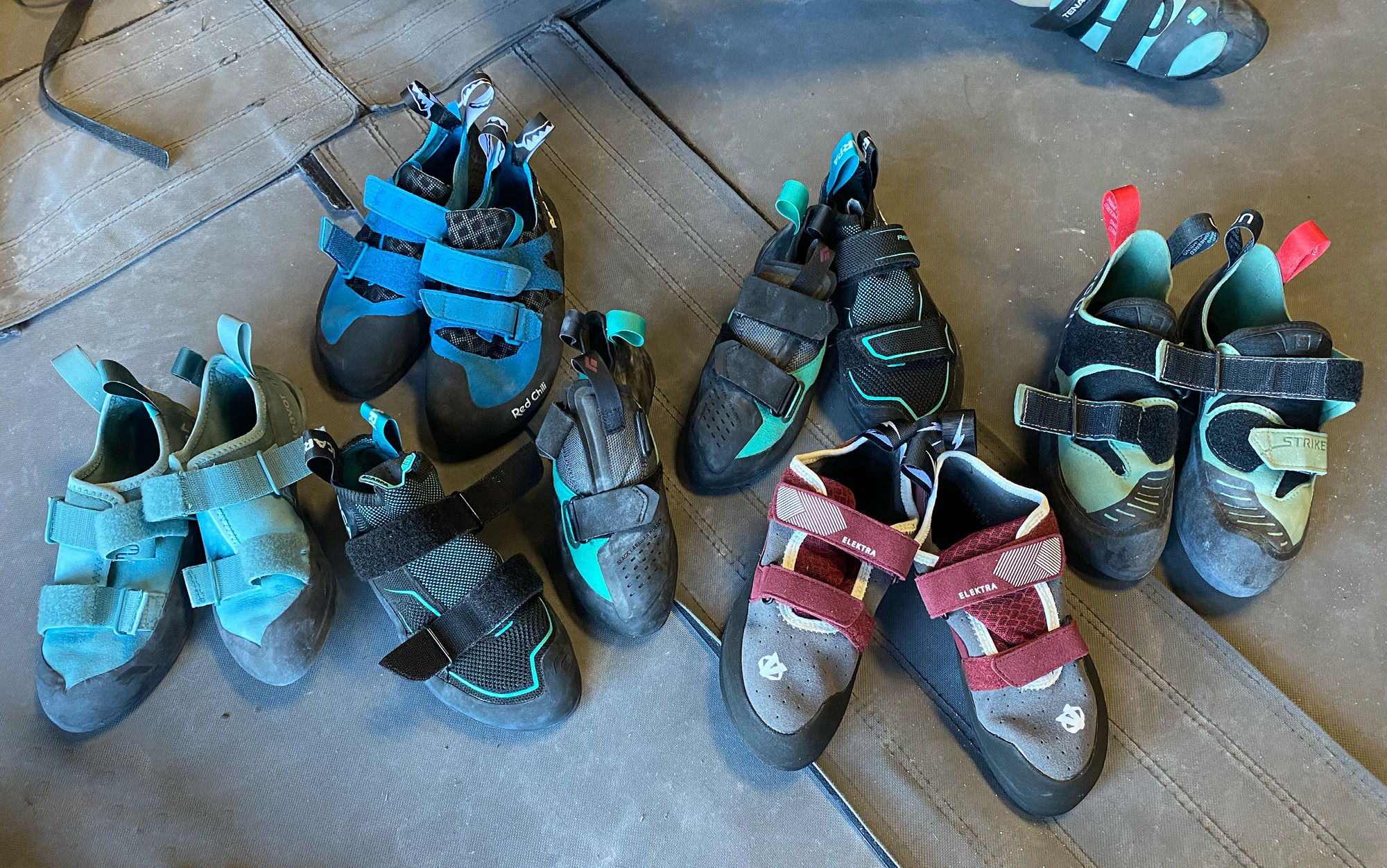
Climbing Style
First, think about the kind of climbing you like to do. Are you hoping to venture outdoors, or will you continue to do most of your climbing in the gym? Are you more of a social climber, or are you planning to train hard and accelerate through the grades? Outdoor climbers and those who plan to do a high volume of training will need a more versatile, more durable shoe, while social climbers may want to prioritize comfort over all else.
Also keep in mind your foot shape. Some brands, like Butora, offer shoes in wide or high-volume versions. Other brands, like La Sportiva and Tenaya, tend to cater to a slightly narrower foot shape. The best way to figure out your fit is to go into your local climbing shop and try on as many pairs as possible. Look for a snug fit — you’ll want your toes to touch the end of the shoe, and the heel cup to feel very secure. Looseness in the heel or a baggy fit around the instep can cause your foot to shift and slide, which can make climbing difficult.
Shoe Materials
Finally, consider the materials of the shoe. Rubber compounds vary widely. Hard rubbers — like Vibram’s XS Edge or Evolv’s Trax XE — tend to be more durable, while soft rubbers — like Vibram’s Grip 2 or Five Ten’s Stealth — will feel stickier on the wall.
Climbing shoe uppers are usually made of either synthetic fabric or leather. Leather tends to resist foot funk, but it does stretch over time — which means you may need to go down a half-size to accommodate that. In contrast, synthetic materials tend to hold their shape and size, but they often start to stink after just a few wears.
FAQs
Climbing shoes are notorious for taking on a serious funk. While most climbers choose not to clean their shoes regularly, a quick scrub every few months can reduce odors and boost longevity. Avoid using soaps, as harsh chemicals can dry out or damage most materials. Instead, dunk your shoes in warm water and scrub the inside of the shoe with a small quantity of baking soda. Be sure to rinse them thoroughly afterward and let them air dry. Never use scalding water or put your shoes in the dryer — heat can melt the glues holding the shoe together and cause it to delaminate.
You can also prevent shoe stink by wearing socks when you climb, letting your shoes air out completely between sessions, and placing dryer sheets or anti-odor products in them when not in use.
One of the most shocking things you’ll learn as a beginner climber is just how fast shoes break down. Your first pair may only last six months to a year before they need to be resoled. That’s because climbing shoe rubber is very soft. That softness allows it to squish into the textures of the holds to keep you on the wall, but it also means that the rubber will wear away over time, especially if you climb a lot or have sloppy footwork.
The good news is that the more your technique improves, the longer your shoes will last. To make them last longer, send them to a reputable climbing shoe resoler whenever the edge starts to deteriorate (resoling is much less expensive than buying an entirely new pair). Also avoid storing your shoes in the car or in other areas that experience high temperature swings.
Climbing shoes are designed to withstand the forces of vertical climbing — not strolling across flat ground. Walking in your climbing shoes can break down the curvature of the arch and strain the materials over time. Especially avoid walking around outdoors; rocks, sticks, dirt, and pine needles can all contaminate or wear down the rubber, and stepping on something sharp can puncture the rubber — which necessitates an immediate resole.
Final Thoughts on the Best Beginner Climbing Shoes
Your choice of climbing shoe will depend on your personal preferences and your climbing goals. If you’re looking to start jumping grades, choose a slightly downturned shoe — like the Butora Endeavor 2.0 or Red Chili Circuit. If comfort comes first and foremost, choose a shoe with a flat, neutral shape — like the Ocun Striker QC or the La Sportiva Tarantulace.
Regardless of your aspirations, keep in mind that fit always comes first. The more snugly and securely your shoe wraps your foot, the more sensitivity and precision you’ll have on the wall. Narrow-footed testers should look for shoes built specifically for them: Both the Tenaya Masai and the Evolv Elektra are built on slim lasts, making them ideal for low-volume feet. If you’re on the opposite end of the spectrum, look for brands like Butora or Red Chili, which tend to fit wider feet.
Take your time during this process. There’s tons of variation in climbing shoe fit and design, and finding the perfect shoe is one of the best ways to accelerate your progress and help you take more pride and ownership in the sport. The perfect shoe for you is out there somewhere; I hope this guide helps you find it.

